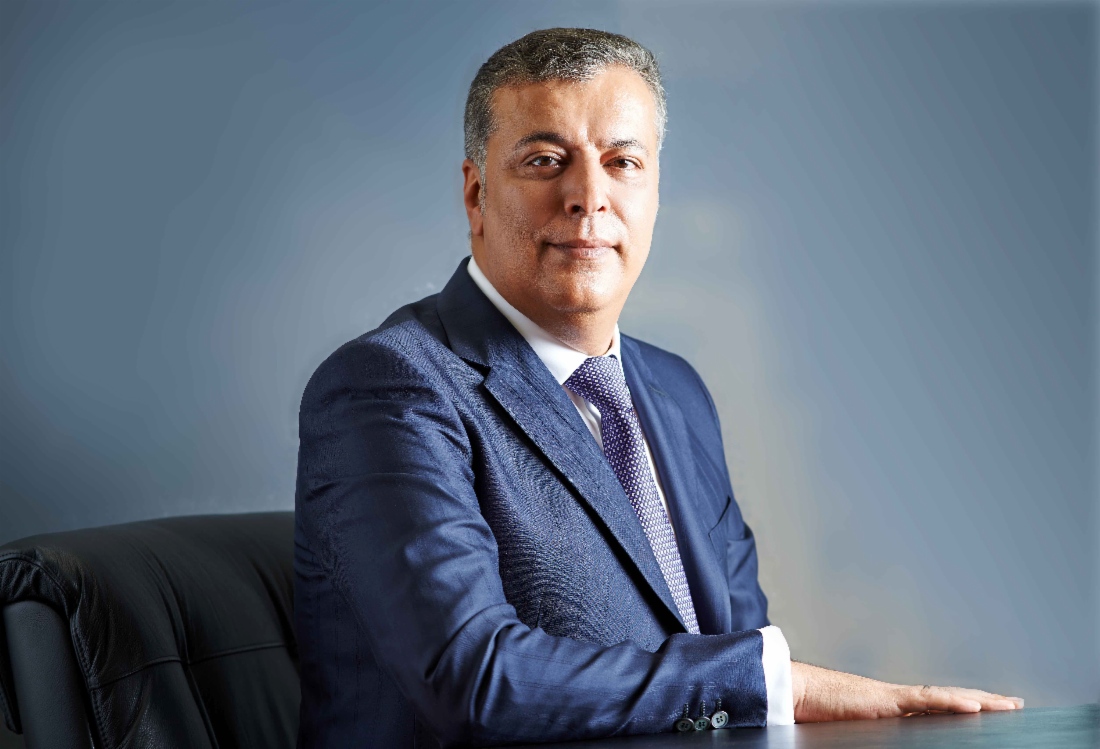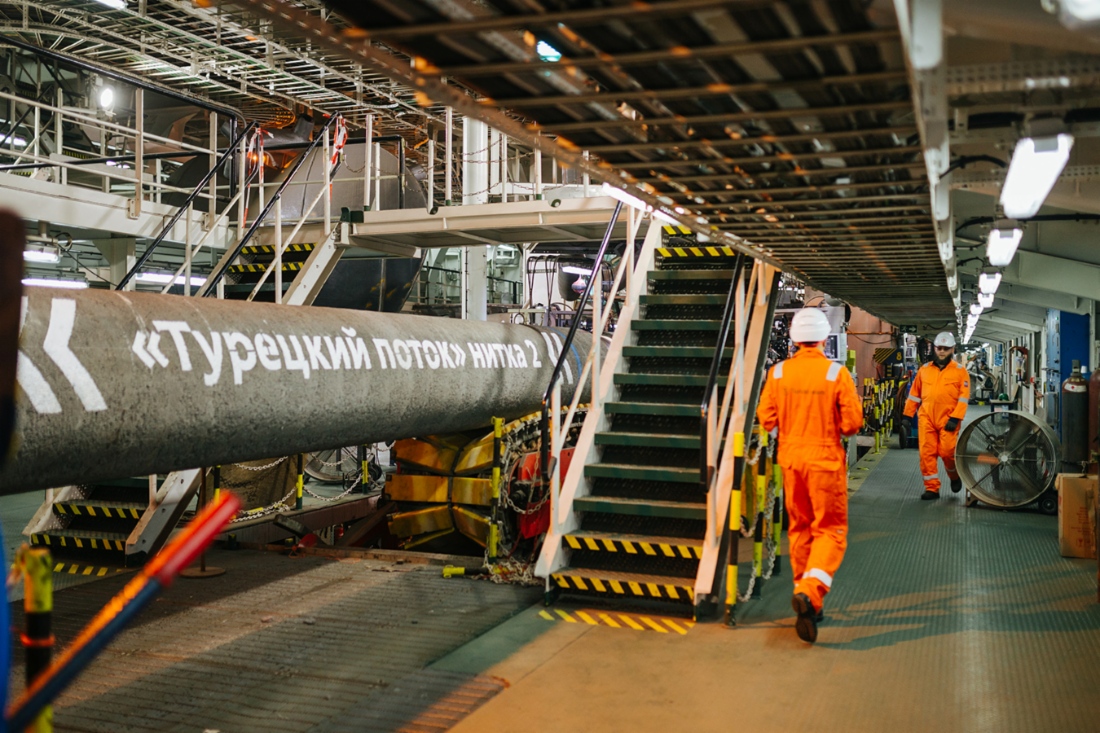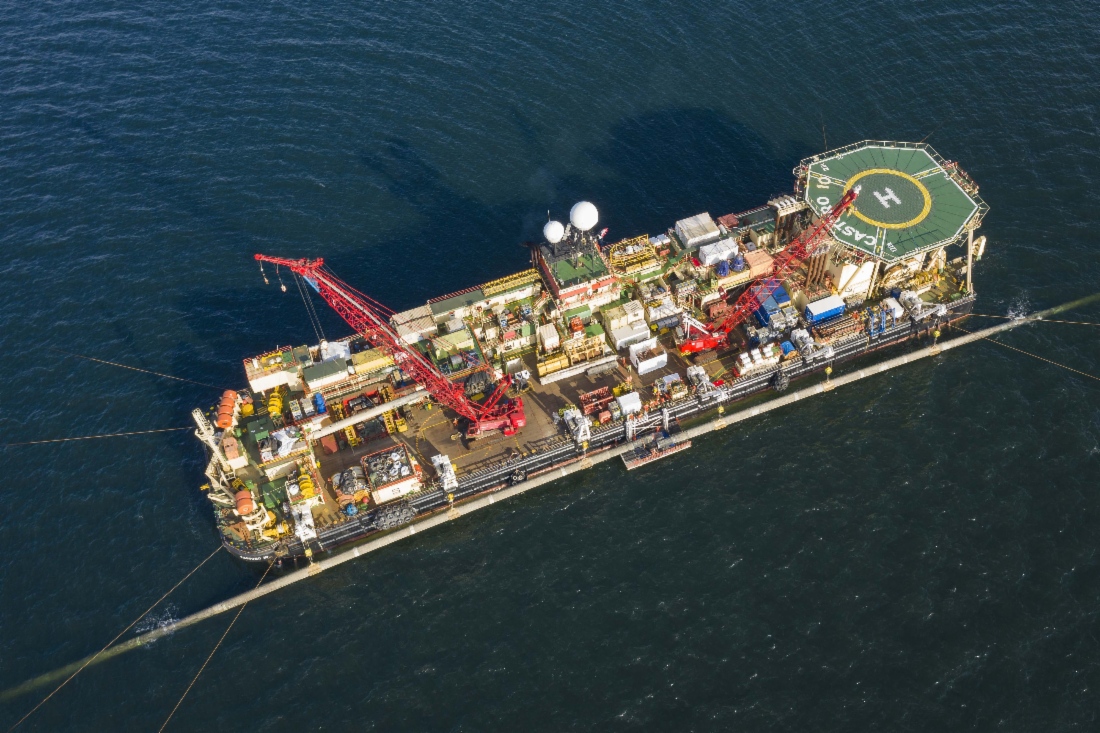Dividend growth
December 23, 2019
Published in corporate Gazprom Magazine Issue 12, interview conducted by Sergey Pravosudov
Famil Sadygov, Deputy Chairman of the Gazprom Management Committee, answers questions from Gazprom Magazine
- Mr. Sadygov, what year-end financial results (revenue, EBITDA, net profit) does the Gazprom Group expect in 2019?
-
2019 was rather challenging in terms of the environment at gas markets. Throughout the year, a number of factors, such as the warm weather in the 2018/2019 winter period, an increased availability of LNG on a global scale, a sluggish gas demand in Asia, etc., were driving down the spot gas prices on European trading floors. As a result, spot gas prices in Europe fell to extreme lows in the summer. The gas prices in the European hubs began to recover at the start of gas withdrawal in October and the onset of the winter season. These price dynamics in our key export market largely determine the forecast of the Gazprom Group's key financials in 2019.
With due account for auditing procedures, the Gazprom Group's IFRS financial statements for 2019 will be prepared and published in late April next year, which is why only preliminary forecasts are possible at the moment.
Given the average annual price of oil and gas anticipated in the European market, we expect that in 2019 Gazprom Group's revenue will be above USD 120 billion, and EBITDA – around USD 30 billion. It is very hard to predict the amount of net profit right now due to high exposure to currency exchange differences, which depend on the currency exchange rates as of the last reporting date of the year.
- What amount of free cash flow is expected at the end of 2019?
-
Gazprom strives to maintain a positive free cash flow each year, as it has a strong effect on the Company's operating efficiency. Financial analysts use a variety of methods to identify the amount of free cash flow. We calculate this indicator as the difference between the operating cash flow and investment financing. Generation of a positive free cash flow helps the Company maintain financial stability even under unfavorable conditions in commodity and financial markets.
We remain strongly committed to improving our free cash flow generation capabilities by enhancing operational performance, controlling investment costs, and increasing the effectiveness of the capital investment program.
In 2019, we are passing the peak of the investment cycle in connection with the simultaneous implementation of three strategic projects: Power of Siberia, Nord Stream 2, and TurkStream. Nevertheless, even despite the high capital investments and a slump in the European gas market, we predict a positive free cash flow at the end of the year. In addition to the above factors, the final value will depend on the working capital movement across the Gazprom Group by the end of 2019.
Nevertheless, despite the high capital investments and a slump in the European gas market, we predict a positive free cash flow at the end of the year
Comfortable level of debt
- What will happen with the debt burden of the Gazprom Group in 2019?
-
At present, the overall debt, repayment profile, average cost of debt, and debt ratios are at comfortable levels for us despite additional borrowings taken out for the implementation of significant projects: Nord Stream 2 and the Amur Gas Processing Plant.
According to the Gazprom Group's IFRS consolidated financial statements for the first nine months of 2019, the most frequently used indicator of debt burden – net debt to EBITDA – amounted to 1.1, which is deemed to be a comfortable level by both national and international standards. It should be noted that, in order to ensure the most adequate analysis of our financial standing, we recommend that analysts and investors take into account the bank deposits that are not reflected in the item entitled “Cash and cash equivalents in IFRS statements” when calculating the net debt. The amount of such deposits was RUB 391 billion as of the end of the third quarter of 2019.
Therefore, Gazprom has a wide margin of safety with regard to liquidity and creditworthiness because the current debt burden is far below the upper limit of the comfortable net debt/EBITDA ratio, which for us means a ratio below 2.0.
Gazprom also carries out extensive control over the external borrowings and debts of the Group. To this end, limits on debt ratios and financial and economic indicators are set for these companies, and their external borrowing programs and specific transactions are assessed for compliance with the preset limits and financial targets.
With a view to reducing the debt burden, improving liquidity, and optimizing the debt structure, an increasing number of subsidiaries are being engaged in the cash pooling system. Besides, Gazprom Group companies are making sustained efforts to bring down interest rates by refinancing existing loans and borrowings and also using financing instruments that have no impact on the external debt level.
At present, Gazprom's credit ratings from the three largest international rating agencies stand at the investment-grade level, which gives authoritative proof of high creditworthiness and financial stability of the Gazprom Group as assessed by third parties.
The scope of Gazprom's borrowing program (excluding intra-Group loans) for 2020 is RUB 557.77 billion
- Tell us about the medium-term borrowing strategy of the Gazprom Group.
-
The Gazprom Group has been pursuing a conservative borrowing policy for several years and continues to optimize its debt portfolio.
The annual amount of borrowings is defined by the Company's budget, which is approved by the Gazprom Board of Directors. When developing our borrowing strategy, we factor in the situation in the main financial markets of bank loans and bond issues (in ruble and foreign currency).
The scope of Gazprom's borrowing program (excluding intra-Group loans) for 2020 is RUB 557.77 billion.
The choice of currency and instruments depends on the market conditions and terms of borrowing. The Gazprom Group procures funds mostly in foreign currency, which is explained by low interest rates in foreign markets and a high capacity of international capital markets compared to ruble-based instruments. In addition, about two-thirds of the Group's revenue is generated in foreign currency, which creates a natural currency hedge in terms of debt servicing. Ruble loans comprise about 20 per cent (7–8 per cent for the parent company) of the Gazprom Group's debt portfolio.
Project financing
- Tell us about project financing plans. What is the financing scheme for the Amur GPP's construction? How will you finance the construction of the processing complex in Ust-Luga?
-
In 2019, the Amur GPP project is financed from borrowed funds using mezzanine (bridge) loans and Gazprom's own funds. At the moment, the possible conditions of project financing for the Amur GPP are being negotiated with the potential creditors. The planned deadline for completing the negotiations is late 2019. Although the negotiations on the commercial conditions of project financing are confidential, the willingness of international banks to provide project financing for the Amur GPP significantly exceeds the project's needs. The target level of borrowings is 70 per cent, with the remaining 30 per cent to be sourced from the Company's own funds.
As for the construction of the processing complex in Ust-Luga, the project's financing structure is being worked out with our partners. At the current stage, it is planned to procure funds from both Russian lenders and foreign banks, including loans covered by export credit agencies. We continue to make intensive efforts as part of this crucial project to ensure the timely launch of the plant.
- Are you going to expand cooperation with Asian banks and stock exchanges?
-
Gazprom productively cooperates with banks and investors from the Asia-Pacific region. In late 2018, we successfully completed the first deal for placing yen-denominated bonds in the Japanese market under a JBIC guarantee, with a total worth equivalent to USD 578 million.
Asian markets have less liquidity and capacity than those in Europe and North America. A wide range of Asian currencies enjoy substantial cross-investment demand, which limits the total supply of financing from Asia-Pacific.
At the same time, Asian capital markets are becoming more capacious each year, and we constantly see Asian investors participate in our Eurobond offerings. In this regard, Gazprom does not rule out its possible presence in this market segment if the conditions of such borrowings meet our expectations.
- Is it possible to implement a multi-currency bond issue program in the Russian market?
-
Gazprom is studying the possibility of issuing, to the extent permitted by Russian law, corporate bonds denominated in rubles or foreign currency (US dollar, Swiss franc, euro) for placement with both Russian and international investors.
While designing the structure of local bond issue in foreign currency, we are now selecting the possible issuer of these bonds (Gazprom or its subsidiary) and studying the admissibility of requirements imposed by the tax and currency laws of the Russian Federation with regard to multicurrency bond issuance and circulation.
Taxes
- How much will Gazprom pay in taxes in 2019?
-
Tax payments constitute a significant part of Gazprom's expenses and reflect the Group's important contribution to the federal budget and the regional budgets of the Russian Federation. Gazprom is among the largest taxpayers in Russia. According to our expectations, the amount of tax payments by the Gazprom Group in 2019 will be RUB 2.6 trillion, which is roughly the same amount as last year.
According to our expectations, the amount of tax payments by the Gazprom Group in 2019 will be RUB 2.6 trillion
- Following Gazprom Export's integration into the tax monitoring system at the start of this year, what other steps will be taken in this area?
-
Tax monitoring is a progressive form of tax control that takes the interaction of Russia's Federal Tax Service and the taxpayer to a fundamentally new level. The trust of businesses in the new administration system is growing.
Being reliable taxpayers, the Gazprom Group's companies are committed to establishing an open and constructive dialogue with the Federal Tax Service. Gazprom is actively working to integrate the Group's companies into the tax monitoring system. The primary objective of transitioning to this form of tax control is to further increase the transparency of the Group's activities.
The adoption of the tax monitoring system by Gazprom Export was the first step in the transition of the Group's companies to tax monitoring. Other subsidiary companies will also be integrated into the system in a stepwise manner. From January 1, 2020, tax monitoring will be established in six companies of the Group: Gazprom Dobycha Astrakhan, Gazprom Transgaz Samara, Gazprom Transgaz Saratov, Gazprom Transgaz Tchaikovsky, Gazprom Transgaz Ufa, and Gazprom Transgaz Volgograd. Another 17 companies of the Gazprom Group will join the tax monitoring regime in 2021, followed by 12 more companies in 2022.
Investments and dividends
- What are the parameters of Gazprom's budget for 2020? What about the investment plans?
-
When drafting Gazprom's budget for 2020, we used the initial data and parameters synchronized with the Ministry of Economic Development of Russia and drawn from the macroeconomic development forecast in a way similar to the formation of the federal budget:
- global prices for the Urals oil brand – USD 57 per barrel;
- average annual exchange rate of the dollar – RUB 65.7 per USD;
- average annual exchange rate of the euro – USD 1.14 per EUR.
A conservative approach to budgeting makes it possible for us to deliver on our plans even under adverse market conditions, while maintaining our financial stability.
The draft Investment Program of Gazprom for 2020 was developed with due regard for the forecast financing limits, scheduled timeframes of priority investment projects, and medium-term gas balance indicators. The Investment Program's financing limit for 2020 is RUB 1.08 trillion, which is RUB 259 billion less than the value of the 2019 Investment Program.
The draft Investment Program for 2020 envisages investments for top-priority projects with the purpose of attaining the corporate strategic objectives.
In order to step up the capacities of the Yakutia and Irkutsk gas production centers in 2020, financing will continue to be provided for the development of the Chayandinskoye and Kovyktinskoye fields, construction of the Power of Siberia gas trunkline, including the Kovykta – Chayanda section, and investments will be channeled into the projects providing for gas supplies into the Nord Stream 2 gas pipeline, as well as pre-development and delivery of gas from the Sakhalin shelf and the Kharasaveyskoye field.
The estimated financing volume of Gazprom's Investment Program for 2021–2022 is RUB 1.1 trillion per year.
- What are the Company's plans with regard to paying out dividends for 2019?
-
The Company's management aims to increase shareholder returns and to improve the investment potential and capitalization of Gazprom. For this purpose, the Board of Directors was presented with a new dividend policy, according to which the target level of the dividend payout based on the results of 2021 is to reach 50 per cent of the adjusted net profit attributable to Gazprom's shareholders under IFRS. The target value will be achieved gradually. In accordance with the strategy, the payout level based on the results of 2019 is to comprise 30 per cent of the adjusted net profit, while the amount of ruble-based payouts will depend directly on the Group's financial results for 2019.
We expect the Board of Directors to support our proposals on updating the dividend policy.
Capitalization
- Are there any factors that could contribute to increasing Gazprom's capitalization?
-
We assume that, despite a significant upturn in capitalization achieved in 2019, the Company's shares still have substantial potential for growth.
Since the beginning of the year, the share price has risen by more than 60 per cent, and capitalization has reached USD 100 billion. The Company's intention to introduce a new dividend policy and to raise the payout ratio to 50 per cent of the adjusted net profit under IFRS has contributed greatly to attaining these results. Moreover, investors have appreciated the organizational and staff changes carried out by the Company in 2019. And, of course, the launch of gas supplies to China via the Power of Siberia gas pipeline has been one of the most important events of the current year. At the same time, unfavorable pricing conditions in the European gas market have had a dampening effect on Gazprom's stock prices.
We expect further growth of capitalization to be achieved as a result of our strategy meant to improve the free cash flow generation profile due to the following factors:
- start and expansion of supplies via our strategic gas pipelines Nord Stream 2 and TurkStream, which will enable us to reduce the costs associated with gas transmission to European consumers;
- ramp-up of annual gas supplies to China via the Power of Siberia gas pipeline to 38 billion cubic meters in 2025;
- commissioning of the Amur GPP in 2021 and stepping up of gas processing volumes;
- growth of income from our oil business;
- additional proceeds from smaller-scale projects and optimization of the Group's operational, investment and financial activities;
- reduction of the Group's capital investments after passing the peak of the investment cycle in 2019.
In accordance with the new dividend policy, the gradual build-up of the free cash flow will be accompanied by larger dividend payouts. Higher shareholder returns will undoubtedly lead to further growth of Gazprom's capitalization.
I would also like to note that most investment bank analysts have issued a recommendation 'to buy' with regard to Gazprom's shares, predicting a further increase in their value.
We also intend to promote our dialogue with the investment community in various formats in order to enhance the transparency of our activities.
It is worth mentioning that the corporate strategy and plans are always developed with due account of various types of risks and possible scenarios of external conditions. Meanwhile, the strong fundamentals of our assets and a conservative strategy enable us to successfully handle the emerging challenges.






